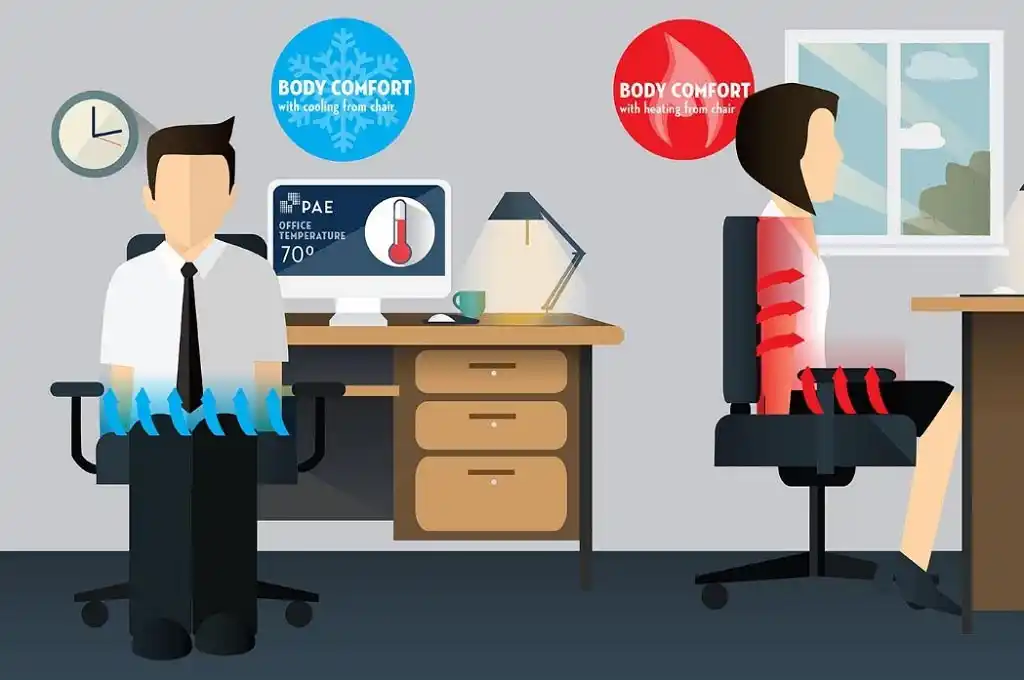In-Depth Exploration of Thermal Comfort

Thermal comfort is essential for ensuring a healthy, productive, and satisfying indoor environment. Here's a more detailed exploration of the factors and considerations involved:
1. Environmental Factors:
- Temperature: Maintaining an optimal range of air and radiant temperatures is crucial. The recommended range often lies between 20-24°C (68-75°F) depending on the season and activity levels.
- Humidity: Ideal relative humidity levels for comfort are usually between 30-60%. High humidity can make the air feel warmer than it is, while low humidity can lead to dry skin and respiratory discomfort.
- Air Movement: Air velocity helps regulate temperature perception. Gentle airflow can enhance comfort, but too much can lead to drafts. Optimal air movement is generally between 0.1 to 0.2 m/s.
2. Personal Factors:
- Clothing Insulation: The clothing we wear acts as an insulator. In cooler climates, layers help trap warmth, while in warmer climates, lightweight and breathable fabrics are preferred. Clothing insulation is measured in 'clo' units.
- Metabolic Rate: Our body's heat production varies with activity level. For example, sitting at rest has a lower metabolic rate compared to performing physical labor. Metabolic rate is usually expressed in metabolic equivalents (MET).
3. Psychological Factors:
- Perception: Individual perceptions of thermal comfort can vary widely due to personal preferences, acclimatization, and psychological factors.
- Expectations: Previous experiences and expectations of thermal environments also influence comfort levels.
Design Considerations for Achieving Thermal Comfort:
- HVAC Systems: Heating, ventilation, and air conditioning systems should be designed and maintained to provide consistent and controllable indoor climates.
- Building Materials: The choice of materials, insulation, and glazing impacts thermal comfort. High thermal mass materials can help stabilize indoor temperatures.
- Passive Design: Incorporating elements such as natural ventilation, shading devices, and orientation of the building can enhance thermal comfort without relying heavily on mechanical systems.
Thermal Comfort Models:
- Predicted Mean Vote (PMV) Model: Developed by Fanger, this model predicts the average thermal sensation of a large group of people based on environmental and personal factors.
- Adaptive Comfort Model: This model is based on the idea that occupants can adapt to a wider range of temperatures if given control over their environment (e.g., opening windows, adjusting clothing).
Impact on Health and Performance:
- Physical Health: Proper thermal comfort can prevent heat-related illnesses in hot conditions and hypothermia in cold conditions.
- Mental Health: Comfortably designed indoor environments can reduce stress and enhance mood.
- Work Performance: Studies show that thermal discomfort can lead to decreased concentration, increased errors, and overall reduced productivity.
Energy Efficiency and Sustainability:Achieving thermal comfort while minimizing energy consumption is a key goal in sustainable building design. Strategies include:
- Energy-Efficient HVAC Systems: Utilizing advanced technologies such as variable refrigerant flow (VRF) systems, and geothermal heat pumps.
- Renewable Energy Sources: Incorporating solar panels, wind turbines, and other renewable energy sources to power HVAC systems.
- Smart Controls: Implementing automated systems that adjust temperature and humidity based on occupancy and environmental conditions.
In conclusion, thermal comfort is a multifaceted concept that integrates environmental, personal, and psychological factors. By understanding and addressing these factors, we can create indoor spaces that promote health, well-being, and productivity while also being energy-efficient and sustainable.